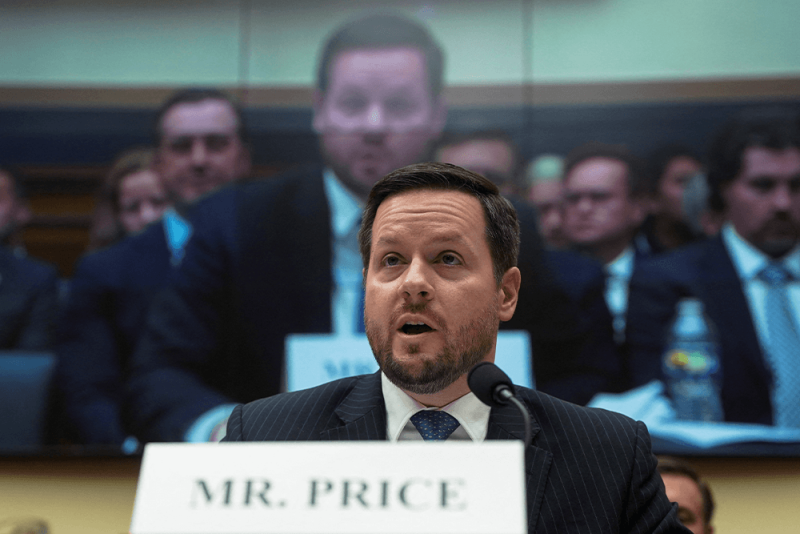Far-Right Christians Put Europe’s Online Speech Laws to the Test – Sojourners

Report on the Intersection of Digital Regulation, Freedom of Expression, and Sustainable Development Goals
A legal and political conflict is escalating across Europe and North America concerning the regulation of online content, with significant implications for the achievement of the Sustainable Development Goals (SDGs), particularly SDG 16 (Peace, Justice and Strong Institutions), SDG 5 (Gender Equality), and SDG 10 (Reduced Inequalities).
1.0 Case Study: Finland and the Interpretation of Fundamental Freedoms
The ongoing legal proceedings in Finland involving politician Päivi Räsänen and Bishop Juhana Pohjola serve as a key indicator of the tensions surrounding SDG 16.10, which aims to ensure public access to information and protect fundamental freedoms. The case, now before the Finnish Supreme Court, centers on whether expressing religious beliefs on marriage and sexuality constitutes hate speech, thereby testing the legal boundaries between freedom of expression and the protection of vulnerable groups.
- Initial Charges: Alleged hate speech for tweeting a Bible verse and co-authoring a booklet on marriage and sexuality.
- Legal Progression: Two acquittals in lower courts, followed by an appeal to the Supreme Court.
- SDG Implication: The case directly challenges institutions to balance the fundamental freedom of religious expression with the mandate under SDG 5 and SDG 10 to protect individuals from discrimination and promote inclusion.
2.0 The Digital Services Act (DSA) and its Relation to SDG 16
The European Union’s Digital Services Act (DSA) is a central element in this debate. The legislation’s implementation is viewed through two competing lenses, both of which invoke the principles of SDG 16 (Peace, Justice and Strong Institutions).
2.1 Arguments for Regulation in Support of SDGs 5 and 10
Proponents of the DSA argue that it is a necessary framework to advance goals of gender equality and reduced inequality by creating safer digital environments.
- Curbing Harmful Content: The law provides safeguards to mitigate hate speech and disinformation that disproportionately target women and minority groups, directly supporting SDG 5 and SDG 10.
- Preventing Escalation: Proponents, such as Neil Datta of the European Parliamentary Forum for Sexual and Reproductive Rights, assert that limits on speech are essential to prevent incitement to violence and protect vulnerable populations, a core tenet of building peaceful and inclusive societies (SDG 16).
- Public Support: A 2023 study by the Max Planck Institute found that a majority of Europeans support limiting harmful online speech, suggesting public consensus for regulatory actions that protect social cohesion.
2.2 Arguments Against Regulation Citing Threats to SDG 16.10
Opponents, including a coalition of conservative and religious organizations, contend that the DSA undermines fundamental freedoms and creates unaccountable institutions, contrary to the spirit of SDG 16.
- Restriction of Expression: Groups like ADF International argue that broad definitions of “harmful” content give regulators excessive power to silence religious and dissenting viewpoints, thus violating the freedom of expression protected under SDG 16.10.
- Lack of Transparency: The Mathias Corvinus Collegium has filed a formal complaint alleging a lack of transparency in the DSA’s application, which challenges the development of effective, accountable, and transparent institutions (SDG 16.6).
- Censorship Concerns: Opponents frame the DSA as a “censorship regime” that is used to suppress public discontent and stigmatize people of faith, thereby undermining inclusive and just institutions.
3.0 Transnational Advocacy and Digital Strategies (SDG 17)
The conflict over digital regulation is characterized by sophisticated, transnational partnerships, highlighting the importance of SDG 17 (Partnerships for the Goals) in modern advocacy. Organizations are leveraging global networks to influence policy and public opinion.
- Anti-Regulation Coalition:
- ADF International: A U.S.-based Christian legal organization providing legal defense and lobbying international bodies, including the U.S. Congress, against the DSA.
- CitizenGO: A Spain-based platform that uses digital petitions and targeted social media campaigns to mobilize a global audience against policies perceived as threats to religious freedom and traditional values.
- Digital Campaigning Tactics:
Research indicates that anti-rights actors have developed advanced digital competencies to exploit social media algorithms. This strategy, as noted by researcher Giulia Evolvi, amplifies polarizing content and restrictive gender narratives, which can undermine progress on SDG 5 and SDG 10 by fostering division and targeting vulnerable demographics.
4.0 Conclusion: A Global Precedent for Digital Governance and the SDGs
The outcome of the European debate on the DSA is poised to set a significant international precedent. If the EU successfully implements a regulatory framework that balances the protection of fundamental freedoms (SDG 16.10) with the need to combat hate speech and ensure the inclusion and safety of all groups (SDG 5, SDG 10), it could serve as a model for other nations. Conversely, the pushback from advocacy groups highlights the ongoing global challenge of defining the limits of speech in the digital age while upholding the principles of justice, equality, and institutional integrity enshrined in the Sustainable Development Goals.
Analysis of Sustainable Development Goals in the Article
1. Which SDGs are addressed or connected to the issues highlighted in the article?
-
SDG 16: Peace, Justice and Strong Institutions
- The article is fundamentally about legal frameworks, justice systems, and fundamental freedoms. It details the court case of Päivi Räsänen, which tests the Finnish justice system’s interpretation of hate speech laws. The core debate revolves around the European Union’s Digital Services Act (DSA), a regulatory framework aimed at creating accountable and transparent digital institutions. The conflict between freedom of speech and the need to combat hate speech directly engages with the principles of justice and strong governance central to SDG 16.
-
SDG 10: Reduced Inequalities
- The article highlights the tension between different social groups. On one side, religious groups feel their views are being marginalized, leading to perceived inequality. On the other side, the article discusses the targeting of “vulnerable groups” with “anti-LGBTQ+ speech or hateful rhetoric.” The debate over hate speech laws and the DSA is linked to ensuring the inclusion and protection of all people, irrespective of their religion, sexual orientation, or other status, which is a key objective of SDG 10.
-
SDG 5: Gender Equality
- The issues at the heart of the free speech debate in the article are explicitly linked to gender and sexuality. The conflict arose from comments on a Pride event, and the article repeatedly mentions “same-sex marriage, gender, and abortion,” “anti-LGBTQ+ speech,” and “restrictive gender narratives.” These topics are directly related to achieving gender equality and ending discrimination based on gender identity and sexual orientation, which is an integral part of SDG 5.
2. What specific targets under those SDGs can be identified based on the article’s content?
-
Under SDG 16: Peace, Justice and Strong Institutions
- Target 16.3: “Promote the rule of law at the national and international levels and ensure equal access to justice for all.” This is demonstrated by the legal case of Päivi Räsänen and Bishop Juhana Pohjola, which is proceeding through the Finnish court system up to the Supreme Court, illustrating the process of seeking justice and legal adjudication.
- Target 16.6: “Develop effective, accountable and transparent institutions at all levels.” The debate around the DSA directly addresses this target. The Mathias Corvinus Collegium’s formal complaint demanding transparency about how the DSA is being applied is a clear call for institutional accountability and transparency.
- Target 16.10: “Ensure public access to information and protect fundamental freedoms, in accordance with national legislation and international agreements.” This is the central theme of the article. The entire conflict is a struggle to define the balance between the fundamental freedom of expression (defended by ADF International) and the need to protect individuals from hate speech, as legislated by the DSA and other national laws.
- Target 16.b: “Promote and enforce non-discriminatory laws and policies for sustainable development.” The article discusses the enforcement of hate speech and anti-discrimination laws, which some groups claim are being used to “silence and stigmatize people of faith,” while others argue they are necessary safeguards to curb hate speech and protect vulnerable communities.
-
Under SDG 10: Reduced Inequalities
- Target 10.2: “By 2030, empower and promote the social, economic and political inclusion of all, irrespective of age, sex, disability, race, ethnicity, origin, religion or economic or other status.” The article discusses how certain Christian groups feel excluded and constrained in expressing their beliefs, while also highlighting how “anti-LGBTQ+ speech” targets vulnerable groups, posing a threat to their social inclusion and safety.
- Target 10.3: “Ensure equal opportunity and reduce inequalities of outcome, including by eliminating discriminatory laws, policies and practices.” The debate over whether hate speech laws and the DSA are necessary anti-discriminatory policies or are themselves discriminatory against religious expression is central to this target.
-
Under SDG 5: Gender Equality
- Target 5.1: “End all forms of discrimination against all women and girls everywhere.” While the target specifically mentions women and girls, its principle extends to ending discrimination based on gender and sexuality. The article’s focus on “anti-LGBTQ+ speech,” “same-sex marriage,” and “gender” directly relates to combating discrimination against individuals based on their sexual orientation and gender identity.
3. Are there any indicators mentioned or implied in the article that can be used to measure progress towards the identified targets?
-
Legal and Regulatory Frameworks:
- The existence, content, and enforcement of laws like the Digital Services Act (DSA) and national hate speech legislation serve as a direct indicator for measuring the protection of fundamental freedoms and the regulation of harmful content (relevant to Target 16.10 and 16.b).
-
Judicial System Activity:
- The number and outcomes of legal cases related to hate speech, such as the Räsänen case being “twice acquitted in lower courts” before moving to the Supreme Court, can be used as an indicator to measure access to justice and the application of the rule of law (relevant to Target 16.3).
-
Public Opinion and Surveys:
- The article explicitly mentions a “2023 study by the Max Planck Institute” which found that a “majority of Europeans support limiting online speech.” Such studies provide a quantitative indicator of public attitudes towards freedom of speech and its limits, which is relevant for gauging societal consensus on policies (relevant to Target 16.10).
-
Advocacy and Civic Engagement:
- The filing of formal complaints (e.g., the Mathias Corvinus Collegium’s complaint to the European Ombudsman) and the organization of petitions (e.g., CitizenGO’s petition against the DSA) are indicators of civil society’s engagement in holding institutions accountable (relevant to Target 16.6).
-
Prevalence of Online Content:
- The article implies that the amount of “hate speech,” “disinformation,” “anti-LGBTQ+ speech,” and “extremist messaging” online is a key concern. The prevalence and reach of such content, as amplified by social media algorithms, can be seen as an implicit indicator of the effectiveness of regulations and the state of social inclusion (relevant to Target 10.2 and 5.1).
4. Table of SDGs, Targets, and Indicators
| SDGs | Targets | Indicators Identified in the Article |
|---|---|---|
| SDG 16: Peace, Justice and Strong Institutions |
|
|
| SDG 10: Reduced Inequalities |
|
|
| SDG 5: Gender Equality |
|
|
Source: sojo.net
What is Your Reaction?
 Like
0
Like
0
 Dislike
0
Dislike
0
 Love
0
Love
0
 Funny
0
Funny
0
 Angry
0
Angry
0
 Sad
0
Sad
0
 Wow
0
Wow
0



















































.jpg.webp?itok=0ZsAnae9#)

























